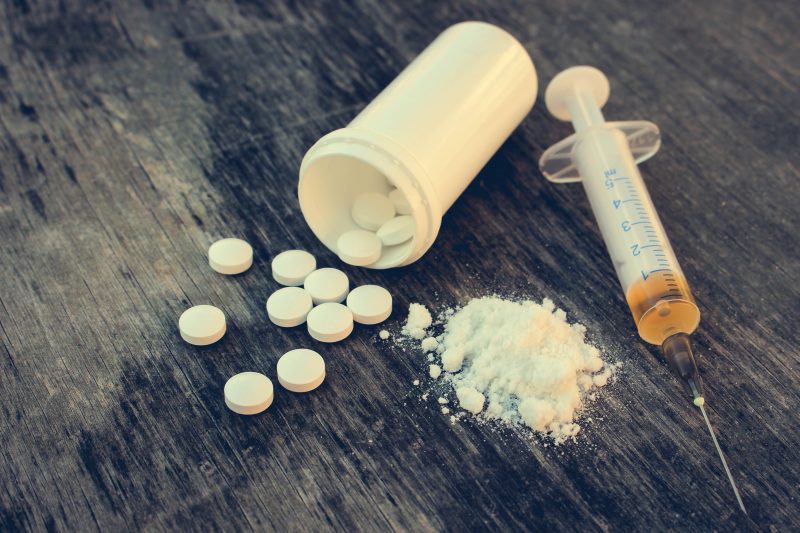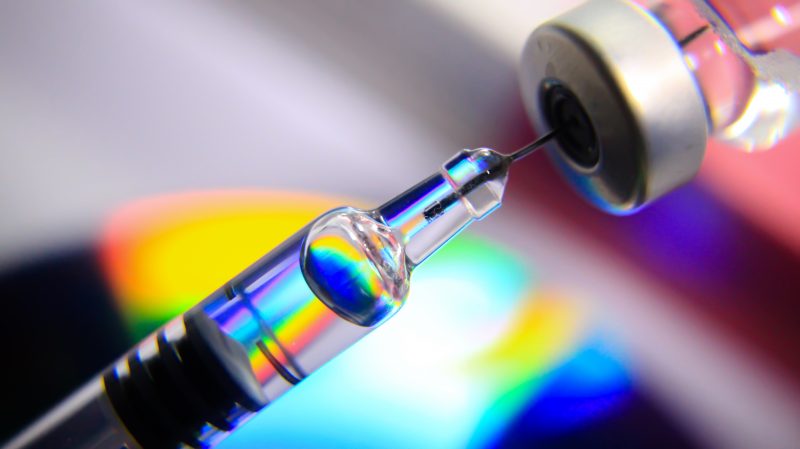Medication Assisted Treatments
Approximately 2.1 million people suffer from OUD, a chronic relapsing illness characterized by repeated, compulsive opioid seeking or use despite harm. The most recent data on fatalities from the opioid overdose crisis (MMWR, January 4, 2019) report an average of 130 deaths each day from opioid overdose in 2017, representing a 12% increase from the previous year. The “silver lining” in the otherwise somber news was the stabilization of deaths from prescription opioids and heroin. Synthetic opioids, primarily illicitly manufactured fentanyl and its analogs were responsible for the upsurge, accounting for 60% of fatalities, an increase of about 45% from the previous year. The devastation would likely be far greater, absent significant congressional appropriations, intervention by various HHS operating divisions, including NIDA, SAMHSA and FDA, and the involvement of other stakeholders at the federal, state and local level.
Efforts by HHS have included: (i) NIDA’s growing emphasis on funding high impact OUD and opioid overdose research directed at FDA approval of putative treatments; (ii) the NIH HEAL Initiative to address the opioid crisis via more effective and safe ways to prevent and treat OUD; (iii) SAMHSA’s robust focus on expanded access by linking individuals with OUD to harm-reduction services; (iv) FDA Division of Anesthesia, Analgesia, and Addiction Products (DAAAP) timely approval of Opiant/Adapt’s intranasal naloxone, an opioid overdose reversal agent (NARCAN®); and (v) DAAAP’s approval of MATs, including the recently introduced monthly extended-release (depot) subcutaneous buprenorphine (Sublocade®) from Indivior and the “tentative approval” for Braeburn’s depot buprenorphine (Brixadi™).

Current Medication Assisted Treatments
The standard of care for moderate to severe OUD is MAT which combines pharmacologic treatment with counseling and psychosocial support. The objectives of MAT are to reduce or eliminate illicit opioid use (by decreasing cravings and withdrawal symptoms), criminal activity, and the spread of infectious diseases, while improving function and quality of life. Pharmacologic interventions assume a far greater role than counseling because medications have a much better evidence base than counseling. Furthermore, publicly-funded treatments generally do not pay for frequent counseling.
Three FDA-approved medications are available for MAT: (i) daily oral and monthly IM depot naltrexone; (ii) daily oral methadone; and (iii) daily oral transmucosal (subcutaneous and buccal) and monthly subcutaneous depot buprenorphine. The benefits and shortcomings of available MATs relate to their pharmacologic effects, diversion risk, prescribing restrictions and routes of administration. Despite their important contribution to the field of addiction medicine, the overall success of MATs in achieving abstinence from illicit opioids is modest, particularly for naltrexone.
Oral Methadone. Methadone, a WHO essential medicine, is the most widely used and studied MAT for OUD. Its efficacy has been reported in numerous clinical trials and meta-analyses where it robustly reduces illicit opioid use and increases treatment retention, when compared with placebo or no treatment. Methadone has also been shown to reduce overdose death, criminal behavior, HIV seroconversion and hepatitis C transmission. Methadone, a full μ-opioid receptor agonist is not subject to significant diversion as it can only be dispensed for OUD as part of highly structured Opioid Treatment Programs (OTPs). Although the number of OTPs and clients receiving methadone has increased to over 1,500 and 350,000, respectively, prescribing of methadone is not without many challenges. For example, patients are required to attend OTP clinics daily for directly observed dose administration. This presents a significant burden to many patients who have limited coping skills and means of transportation. While at OTP clinics, patients are often exposed or in close proximity to drug dealers or other patients with substance use disorders (SUD).
Under federal regulations, patients are permitted one take-home dose of methadone per week, with gradually increasing take-home privileges for those who achieve treatment goals. After one year of treatment adherence, up to 2 weeks of take-home doses are permitted, provided a diversion control plan has been instituted. Typically, this includes random return of take-home containers and a drug testing program to establish a positive test for methadone, and a negative test for other drugs of abuse. Unfortunately, OTPs are primarily located in urban areas, limiting access for people living in rural and nonmetropolitan areas that have the highest percentage increase in opioid overdose deaths. In addition, methadone is proarrhythmic and its use has been associated with long QT syndrome, leading to potentially lethal ventricular tachyarrhythmias, torsades de pointes and sudden death. Finally, as a full MOR agonist, methadone carries greater risk of death in overdose settings, although this risk is mitigated under directly observed methadone administration.
Oral Naltrexone. Naltrexone is a μ-opioid receptor antagonist. As such, it does not control symptoms of withdrawal or reduce craving, so it is only indicated for the prevention of relapse in patients who have already achieved complete abstinence from opioids. A Cochrane review of 13 randomized clinical trials, an expert review for the UK’s National Health Service, the VA/DoD clinical practice guidelines and a SAMHSA Treatment Improvement Protocol (TIP) all recommend against MAT with oral naltrexone due to inefficacy, low rates of patient acceptance and retention, and high rates of medication nonadherence. In addition, many patients on daily oral naltrexone report an intense “adherence disrupting” craving for illicit full μ-opioid receptor agonists, risking a significant treatment setback.
Oromucosal Buprenorphine. Buprenorphine is a partial μ-opioid receptor agonist and a κ-opioid receptor antagonist. While effective, daily oral transmucosal buprenorphine (not to be confused with depot monthly buprenorphine) has many underappreciated limitations, including: (i) suboptimal adherence and treatment retention; (ii) diversion and misuse; and (iii) potential for accidental pediatric exposure. For example, the low adherence to oral transmucosal buprenorphine (32% to 46%) is associated with higher relapse rates. In one study, relapse to illicit opioids was 10 times greater when transmucosal buprenorphine adherence fell below 80%.
Buprenorphine, like other opioids, is subject to diversion, misuse, and abuse. A vast majority of buprenorphine used illicitly in the U.S. is diverted from prescriptions written for MAT. Buprenorphine is also one of the most common opioids identified by forensic laboratories and addiction treatment centers, after heroin, oxycodone, fentanyl, and hydrocodone. In addition, from 2008-2015, oral transmucosal buprenorphine was implicated in accidental poisoning and over 8000 emergency department visits by children ≤ 6 years, with 62% requiring hospitalization and 75% involving children aged 1 to 2 years. Finally, like methadone, buprenorphine is proarrhythmic and can result in long QT syndrome, but this effect occurs at much higher doses except when combined with other medications that also prolong the QTc interval (e.g., antiretrovirals such as delavirdine and ritonavir, and antiarrhythmics such as amiodarone).
Depot Intramuscular Naltrexone. Depot (extended-release) naltrexone (Vivitrol®) is given as a large volume (4 mL) monthly gluteal injection to block activity at the μ-opioid receptor. It does not control symptoms of withdrawal or reduce craving and is suitable only for highly compliant patients with a robust support system who wish to discontinue all μ-opioid receptor agonists. It is indicated for the prevention of relapse in patients who have already achieved complete abstinence and who are highly motivated to stay abstinent. Patients must first undergo opioid withdrawal for 7 days and abstain from buprenorphine and methadone, a major challenge for many. Patients can also experience withdrawal symptoms for up to two weeks after stopping their μ-opioid receptor agonist(s).
Transient LFT elevations and injection site pain have been reported with Vivitrol. The Vivitrol prescribing information does not provide additional guidance on the anatomic placement of IM injections in the buttocks (beyond “gluteal injection”). Dorsogluteal injections are no longer recommended in clinical practice, particularly for larger volumes and viscous injections due to close proximity to neurovascular structures and the inconsistent depth of adipose tissue. Inexperience with IM injection techniques and imprecise landmarking, particularly for dorsogluteal injection can result pain and sciatic nerve injury. Other IM injection-related side effects common to many drugs are granuloma, intravascular injection, abscess, tissue necrosis, hematoma, fibrosis, cellulitis, and injury to vessels, bone and nerves.
Extended-Release (Depot) Buprenorphine Injection. Depot subcutaneous buprenorphine virtually eliminates the risk of diversion and accidental poisoning and removes the burden of daily adherence observed with oral transmucosal buprenorphine. This provides the potential for enhanced treatment retention, reduced illicit drug use, and greater focus on psychosocial treatment and improved health care outcomes. Two depot buprenorphine formulations, Probuphine® and Sublocade® are on the market. Probuphine® was launched in 2016 as a subdermal implant of four rods (2.5 mm x 26 mm) which release buprenorphine over 6 months, followed by surgical removal and replacement with a second set of rods in the contralateral arm for a further 6 months. The prescribing information for Probuphine® notes that “implants should not be used for additional treatment cycles after one insertion in each upper arm”. In other words, patients must transition back to a transmucosal buprenorphine or receive Sublocade® after a maximum of 12 months of Probuphine®. Additionally, Probuphine® is indicated for patients with low-to-moderate oral transmucosal buprenorphine requirements (≤ 8 mg per day). Rare but serious complications including nerve damage and migration resulting in embolism and death from improper Probuphine® implant insertion have been reported. Additional complications include local migration, protrusion and expulsion.
Sublocade® a monthly abdominal subcutaneous depot buprenorphine was launched in 2018. To initiate Sublocade®, patients need to be on a stable oral transmucosal buprenorphine dose of 8 to 24 mg for at least seven days. Even in the setting of a pivotal 19-week Sublocade® clinical trial, 90% abstinence was achieved in only 24%, and only 62% of subjects completed the study at the highest buprenorphine dose. In clinical trials, 18.9% and 13.8% receiving 300/300 and 300/100 of Sublocade®, respectively reported injection site reactions of mild to moderate severity, with injection site pain, pruritus and erythema predominating. Despite these apparent limitations, Sublocade® represents a major therapeutic advance for the treatment of OUD.

Happy commuinity group of people talking and laughing.
Summary. Although presently available MATs represent an important pharmacologic advance for the treatment of OUD, there is striking interindividual variability in the efficacy, safety, tolerability and psychic effects of MATs. Vivitrol (depot IM naltrexone) is suitable only for a limited number of highly compliant and opioid abstinent patients with a robust support system. Oral methadone has a robust evidence base for use in OUD. However, daily OTP clinic visits significantly limit methadone’s therapeutic potential. With the availability of Sublocade® (depot SC buprenorphine), it is difficult to justify the continued use of Probuphine® (implanted buprenorphine rods) for OUD. Sublocade® should virtually eliminate the diversion observed with oral transmucosal buprenorphine. It also has the potential to provide improved convenience and compliance over daily transmucosal buprenorphine. While Sublocade represents a potential “game-changer” for OUD, abstinence and treatment retention rates for all MATs remain modest, underscoring the need for continued R&D into new pharmacologic modalities with improved outcomes.
We should acknowledge that none of the available MATs for OUD would have been possible without significant basic and translational research support from NIDA, highlighting the important role of the NIH in the prevention and treatment of OUD. Despite significant therapeutic gains in MAT for OUD and similar advances for SUD, there is even more work to done in view of the proliferation of synthetic opioids sold as adulterated heroin, heroin substitute and fentanyl-laced counterfeit opioid pills.


